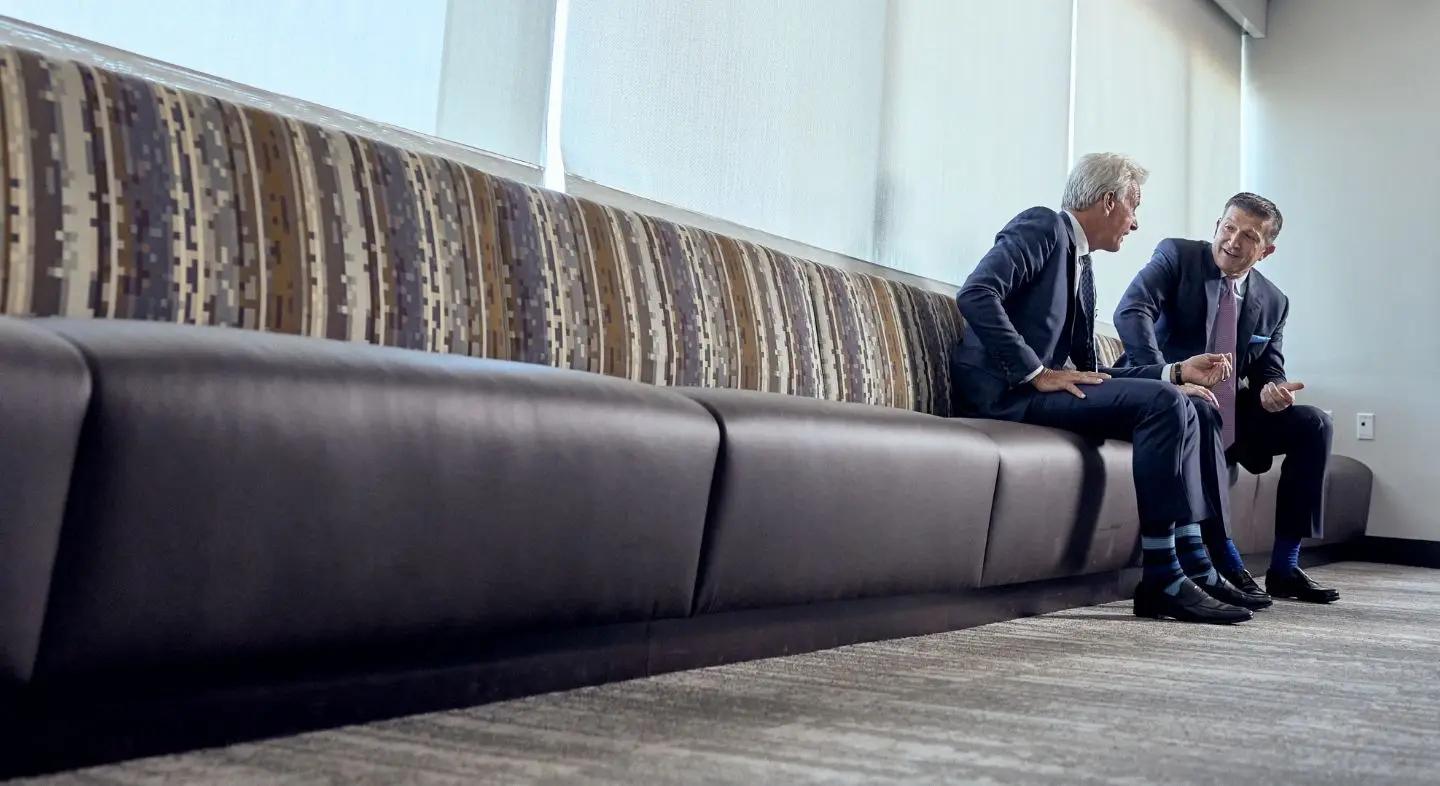December 31, 2024
Seven Rules of the Road for Managing Referrals To/From Other Attorneys – Part I

Filed in:
Table of Contents
Unlike federal or state rules of civil procedure or evidence, there are no hard-and-fast rules regarding how attorneys can and should handle referring clients to other attorneys and receiving referrals from those attorneys, save for some ethical considerations provided by rules of professional conduct and ethics opinions.
Without a common set of rules governing the sending and receiving of referrals, attorneys on either side of a referral relationship could have conflicting expectations of how a referred client’s matter will be handled, how to handle future matters related to that matter, and whether there will be continued referrals between the attorneys.
We at Pond Lehocky Giordano maintain what we believe to be one of the most robust attorney-to-attorney referral programs in the U.S. We actively refer client matters to more than 620 law firms across the world, and referred out almost 24,000 matters over the last twelve months alone.
Informed by our experiences working with so many referral partners and referring so many client matters, in this first part of a two-part series, I offer the following four “rules of the road” for attorneys regarding client referrals. These rules will hopefully help attorneys eliminate misunderstandings around referrals and improve their experiences when sending or receiving them to/from other attorneys.
In Part II, I’ll offer three more rules of the road.
Rule No. 0: Do right by the client
Unlike federal or state rules of civil procedure or evidence, there are no hard-and-fast rules regarding how attorneys can and should handle referring clients to other attorneys and receiving referrals from those attorneys, save for some ethical considerations provided by rules of professional conduct and ethics opinions.
Without a common set of rules governing the sending and receiving of referrals, attorneys on either side of a referral relationship could have conflicting expectations of how a referred client’s matter will be handled, how to handle future matters related to that matter, and whether there will be continued referrals between the attorneys.
We at Pond Lehocky Giordano maintain what we believe to be one of the most robust attorney-to-attorney referral programs in the U.S. We actively refer client matters to more than 620 law firms across the world, and referred out almost 24,000 matters over the last twelve months alone.
Informed by our experiences working with so many referral partners and referring so many client matters, in this first part of a two-part series, I offer the following four “rules of the road” for attorneys regarding client referrals. These rules will hopefully help attorneys eliminate misunderstandings around referrals and improve their experiences when sending or receiving them to/from other attorneys.
In Part II, I’ll offer three more rules of the road.
Rule No. 1: Referrals go to those attorneys who own a niche
In our experience, just like when they’re marketing to would-be clients, attorneys who have narrowed their practice and carved out a niche for themselves will likely be the first person referring attorneys think of when they receive a case in that niche, assuming the attorneys have engaged with those referring attorneys in an effort to build some sort of relationship.
From the perspective of a law firm referring out cases, the fact that a particular attorney only handles cases involving negligence by cemeteries or funeral homes, or is the go-to attorney for negligence claims against a particular nursing home, or is known nationally as a leading divorce attorney for high-net-worth individuals who are public figures, gives us confidence that the referred client will be in good hands with that attorney.
They’ll know the best practices for resolving such cases.
They’ll know how long the cases take to resolve.
They’ll know what to expect from the defense.
They’ll know how to maximize the value of the case for their client.
And most importantly, they’ll understand how to advise the client on these issues and give them a sense of comfort that they’re working with an attorney who knows what they’re doing.
Most attorneys want to be referred a potentially high-value matter, but fewer are qualified to handle such a matter. Attorneys with established niches make a persuasive case to referring attorneys that they should be the ones to receive potentially high-value cases that are squarely within their niche.
Rule No. 2: Referrals go to those attorneys who make it clear they want them
Every attorney in our referral network wants referrals, but not everyone connects with us regularly to ensure they receive them. The attorneys who make it known they want referrals are the ones who receive them.
The attorneys who consistently receive referrals from us are in constant contact with us. They call and email us to ask about additional matters we can refer them. They respond promptly to our emails about potential referrals. They generally engage with us to remind us they are the attorneys we should refer particular types of cases to.
We’re not an outlier. Time and again, the attorneys in our referral network tell us they refer cases to the attorneys who ask for them.
On a related note, one-to-one outreach is still an effective way to build referral relationships. Meetings over coffee, lunch, or dinner, or invitations to a professional event or a social event outside of work, are how referral relationships are born. Even simply asking to be given a chance on a new kind of matter or on more matters is a way to get on the radar of a referring attorney and to receive referrals.
Additionally, in our experience, when referral partners do their best to send high-quality client matters to particular attorneys, those attorneys appreciate the referral partners’ trust and confidence. More often than not, they will reciprocate by sending those partners more of the kinds of matters they would like to handle.
Rule No. 3: Referral fees should be paid promptly (even in the absence of a written agreement)
A surefire way to damage a relationship with a referring attorney is to drag your feet when paying a referral fee to them after you’ve resolved a case for a client that the attorney referred you. In our view, referral fees should be paid within 30 days at the latest after an attorney has resolved a referred client’s matter and received their full fee.
That fee should even be paid in the absence of a written agreement. Yes, entering into written agreements regarding referrals is as much a no-brainer regarding attorney referrals as is the idea that attorneys should diligently represent referred clients. That’s why I won’t address written agreements in this series. But sometimes, a referred case might be resolved before the referring and referee attorneys enter into an agreement.
In our view, the lack of a written agreement should not delay the payment of a referral fee where a referral relationship exists and there is no ambiguity regarding the amount of the fee. Even in situations where there is ambiguity, I highly recommend that attorneys resolve disputes over referral fees quickly and quietly. The value of that referral relationship over time will be more valuable than the disputed amount of a referral fee.
Rule No. 4: Law firms that pay referral fees to the wrong attorney are responsible for making things right
Speaking of referral fees, believe it or not, we’ve seen situations where law firms pay out referral fees to the wrong law firm. When this is the case, the attorney who should have received the referral fee should not have to chase down the law firm that made the mistaken payment or the law firm that received it. The burden to make things right should fall on the law firm that made the mistaken payment.
Once it realizes the error, the law firm that paid the mistaken fee should first pay the correct fee to the correct law firm. Then, the firm should ask the law firm that received the mistaken payment to pay it back. If they do not agree, they should attempt to work out the situation without resorting to, or acting on, threats of litigation or disciplinary complaints.
An attempt to sketch out rules where few exist
With referrals playing such an integral role in many law firms’ client acquisition efforts, it’s surprising that so few resources exist that provide attorneys with a sense of how to manage their referral relationships.
These first four rules of the seven I will cover should help you, your colleagues, and your referral partners do exactly that.
Adam Goldstein is the Chief Strategy Officer for Pond Lehocky Giordano LLP, the largest workers’ compensation and Social Security disability law firm in Pennsylvania, and one of the largest in the United States. He can be contacted at agoldstein@pondlehocky.com.
Reprinted with permission from the November 26, 2024 edition of The Legal Intelligencer © 2024 ALM Media Properties, LLC. All rights reserved. Further duplication without permission is prohibited, contact 877-257-3382 or reprints@alm.com.


